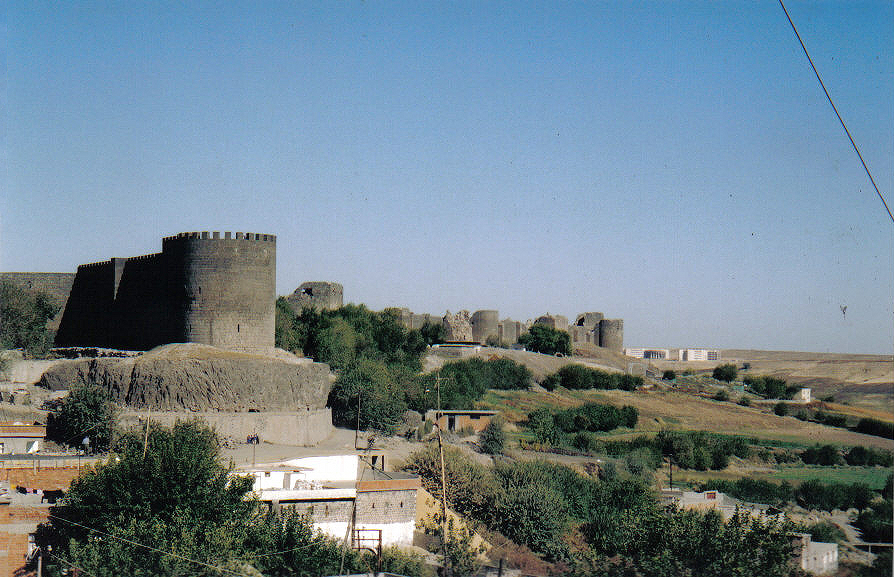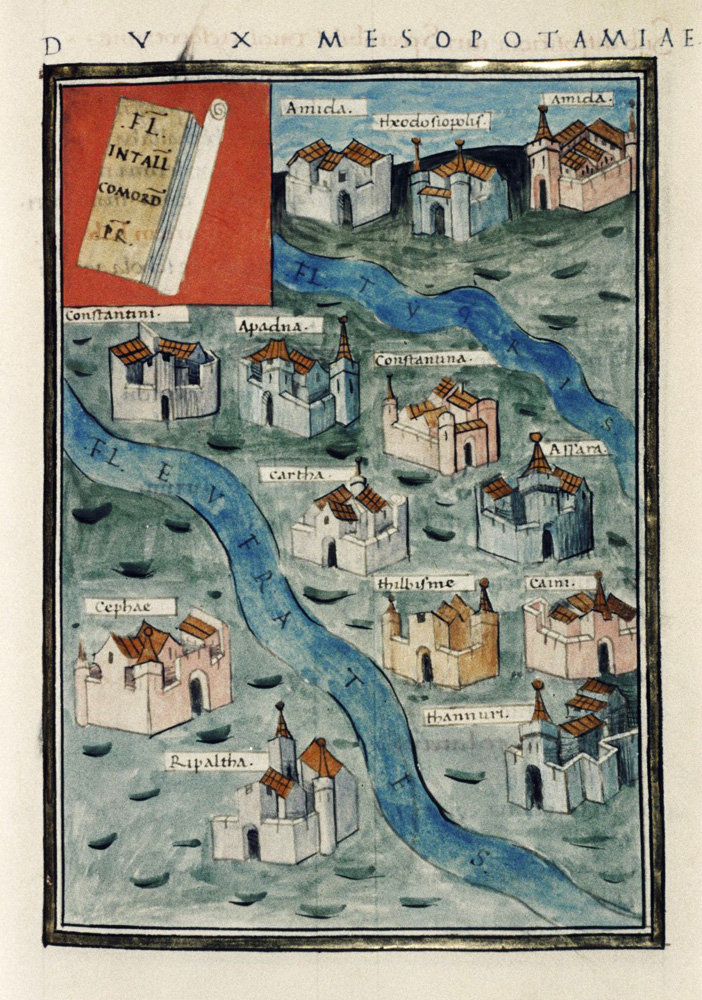Fading Legions:
Rome in the East
by Mike Bennighof, Ph.D.
August 2016
Rome came to the East in the wake of Pompey the Great, who marched into Syria in 64 BC. The self-promoting Roman general overthrew the last of the Seleucid kings, annexing Syria and Palestine as Roman provinces as well as large swaths of Asia Minor. While Pompey had good relations with the Parthians, recent conquerors of the rest of the Seleucid Empire, that did not last and Rome began a series of wars with Parthia starting in 53 BC. These continued intermittently until the fall of Parthia to the Sassanids in 224 AD. Rome and Sassanid Persia then warred upon one another until the collapse of the Persian Empire in 636 under Muslim assault.
During the nearly seven centuries of Roman rule, Syria developed a culture centered in the great city of Antioch. Along with Rome, Alexandria and eventually Constantinople, Antioch was one of the Empire’s major cities, at times serving as the seat of the Emperor. While the upper class residents often spoke Greek and sometimes Latin, most of the population spoke Syriac, a close relative of Aramaic.
Trade made Antioch, and by extension the surrounding area, rich. Caravans came through the Cilician passes from Asia Minor and up through Palestine from Egypt. The fertile valley of the Orontes River usually fed Antioch, but local agriculture had little spare capacity for the times of famine which appear to have come often to the great city. Earthquakes also inflicted massive damage, and the Persians slaughtered or enslaved many residents during their brief occupation. Yet Antioch endured – having declared early for Octavian during his civil war with Marcus Antonius, the city remained favored by the Caesars who followed and the damage was always rebuilt. A vibrant intellectual life marked the city as a center for both Christianity and pagan philosophy.

The Roman Middle East. Open in a new tab to seriously embiggen the map.
To the east of Syria, Roman Mesopotamia had its own riches and even more troubled recent history. Roman rule had first come to the region in 115 when the Emperor Trajan took it from the Parthians and organized the province of Mesopotamia, which included all of the ancient “land between the rivers” Tigris and Euphrates. His successor Hadrian abandoned the province two years later, and the area passed back and forth between the Romans and Parthians for the next eight decades.
Roman Emperor Septimus Severus conquered Upper Mesopotamia in 198 and re-established a Roman province there. Roman Mesopotamia covered the northern part of what today is Iraq along with the eastern half of modern Syria and a fringe of southern Turkey (Trajan’s Mesopotamia extended much further downriver). Severus placed the provincial capital in Nisibis, one of the most important trade centers of the ancient world.
Until the coming of steam power, profitable trade centered on high-density, high-value items that could be transported by camel caravans, horse- or ox-drawn wagons or sailing ships. The Silk Road ended in Nisibis, near the border with Persian Mesopotamia, bringing caravans of silks, spices and other luxury goods from China, India and other Eastern lands. In an age when taxes could only be assessed on the spot with any hope of effectiveness, Nisibis occupied a key place in the Roman Empire’s economy. Caravans bearing these luxuries entered Nisibis, paid their taxes, and Roman merchants purchased them for resale across the Empire. This was not Rome’s only access to Eastern goods; Roman sailors had worked out the patterns of the monsoon, and regularly crossed the Indian Ocean to trade. But it was an important center all the same; the loss of Nisibis in 363 would have a grave bearing on Emperor Valens’ financial woes.
The Emperor Diolcetian, who ruled Rome in the late Third Century, grouped Syria and Mesopotamia, along with Palestine and Cilicia in southern Anatolia into the Diocese of the East, headquartered in Antioch. In 298 the Romans laid a humiliating defeat on the Sassanids and annexed additional lands on the opposite bank of the Euphrates River, which were also incorporated into Diocese of the East and known as the Trans-Tigris Province. All of the provinces in the Diocese would be sub-divided and re-combined several times under different emperors.

The Roman walls of Amida (modern Diyarbakir, Turkey).
Between the commerce fed by the Silk Road’s terminus and the teeming metropolis of Antioch (where Rome’s poll tax could be more easily collected than in rural regions and in far greater amounts), Roman Syria and Mesopotamia represented tax-positive provinces: that is, they fed more gold into the Empire’s coffers than it drained out for defense, building projects and the like. By the First Century AD, Rome’s rulers had figured out that it took money – a lot of money – to run an Empire. Rome stopped conquering barbarian peoples not because it lacked the military or logistical capability to do so, but because the Emperors wisely chose not to add new money-losing provinces to their realm and even abandoned some cash drains.
The Roman East represented a cultural and religious crossroads. Greek culture had arrived in force with Alexander more than six hundred years earlier, and remained important in all of the urban centers. The urban middle and upper classes spoke Greek and Syriac rather than Latin, but considered themselves thoroughly Roman.
Christianity thrived in Antioch and particularly Edessa, but according to Ammianus Marcellinus, an Antiochene pagan who served as a Roman staff officers in the middle of the Fourth Century, Christians and pagans for the most part lived in harmony, with fiercer conflicts coming between different sects of Christianity than between Christians and polytheists, at least until the arrival of Emperor Julian the Apostate in Antioch in 362.
On either side of the Roman-Persian border, important urban and religious centers lay within two weeks’ march of the enemy’s camps. That remorseless geography probably made conflict inevitable. Roman practice on other threatened frontiers – cross into barbarian territory, destroy crops and villages until the enemy was forced to meet the legions in battle, and then slaughter them in huge numbers – did not apply to a civilized, sophisticated state like that of Sassanid Persia. After Rome temporarily lost Syria in the Third Century (first to the Persians, then to the short-lived Palmyrene Empire) the Emperor Diocletian set out to forge a long-term solution.
Diocletian directed the construction of a permanent, well-paved road along the eastern frontier running northeast from the Arabian Desert to the Euphrates River. Small forts dotted the road, each one day’s march from the next. The line would not stop a determined invading army, but it would turn back Arab and Persian raiders while serving as a tripwire to alert against larger incursions.
 North of the Euphrates, Diocletian’s system depended on an interlocking series of well-placed fortified cities: Circesium on the river’s north bank, Singara, Nisibis, Bezabdem Castra Maurum, Cefa and Amida. Where the Strada Diocletiana and its small forts was designed to repel or contain raiders, the line of fortified cities was designed to meet and delay a major invasion by the Persian field army, buying enough time for a Roman field army to arrive and eject the invaders. North of the Euphrates, Diocletian’s system depended on an interlocking series of well-placed fortified cities: Circesium on the river’s north bank, Singara, Nisibis, Bezabdem Castra Maurum, Cefa and Amida. Where the Strada Diocletiana and its small forts was designed to repel or contain raiders, the line of fortified cities was designed to meet and delay a major invasion by the Persian field army, buying enough time for a Roman field army to arrive and eject the invaders.
A moving army’s need for water and forage limited the possible approach routes leading into Roman territory. The fortress-cities lay firmly across the three such avenues of approach, each sited within supporting distance of at least one other fortress. As renewed war became likely at the end of the Emperor Constantine’s reign it appears that each of the six fortresses received its own garrisoning legion, a huge increase from the more typical two-legions-per-province allotment.
Diocletian also created a permanent field army to support the defensive line not only in Syria, but in other parts of the Empire as well (some scholars attribute this to the later Emperor Constantine, but most recent studies credit Diocletian). The army would be split between its Frontier Guard (limitanei) stationed in border forts and city garrisons, and the better-trained, better paid Field Army (comitatenses). Field Army units occupied garrisons further back from the frontier, to allow them to assemble and react to enemy moves. In the Diocese of the East, the Eastern Field Army appears to have gathered its regiments (it’s not clear what the Romans generically called their mobile Field Army heavy infantry units, but they usually did not carry legion numbers) together for annual large-unit maneuvers at Edessa.
While Rome’s grasp of economics was rudimentary at best, that of the Persians was even less evolved. Like their ancient forebears, Persian Kings of Kings continued to sling sacks of gold into their underground vaults rather than allow coins to circulate, under the theory that commoners were unworthy to touch the metal of kings and should only handle silver, but did understand that Roman Syria and Mesopotamia represented rich provinces well worth conquering, with Nisibis a particularly valuable location.
Shapur II, crowned King of Kings while still an infant, came to full control of the throne in 325 at the age of 16. Determined to overturn the disastrous 298 peace treaty with Rome and thereby erase his grandfather’s humiliation, Shapur set out to return the Trans-Tigris regions and Mesopotamia including Nisibis to Persian rule. The young ruler first had to deal with Arab raiders along his southern frontier and a noble revolt against his authority, but by 336 he was ready to take on the Romans. After nearly four decades of peace, three more of war would follow.
Fight the Persians! Click here to order Rome at War: Fading Legions.
Mike Bennighof is president of Avalanche Press and holds a doctorate in history from Emory University. A Fulbright Scholar and award-winning journalist, he has published over 100 books, games and articles on historical subjects.
He lives in Birmingham, Alabama with his wife, three children and his dog, Leopold.
|
